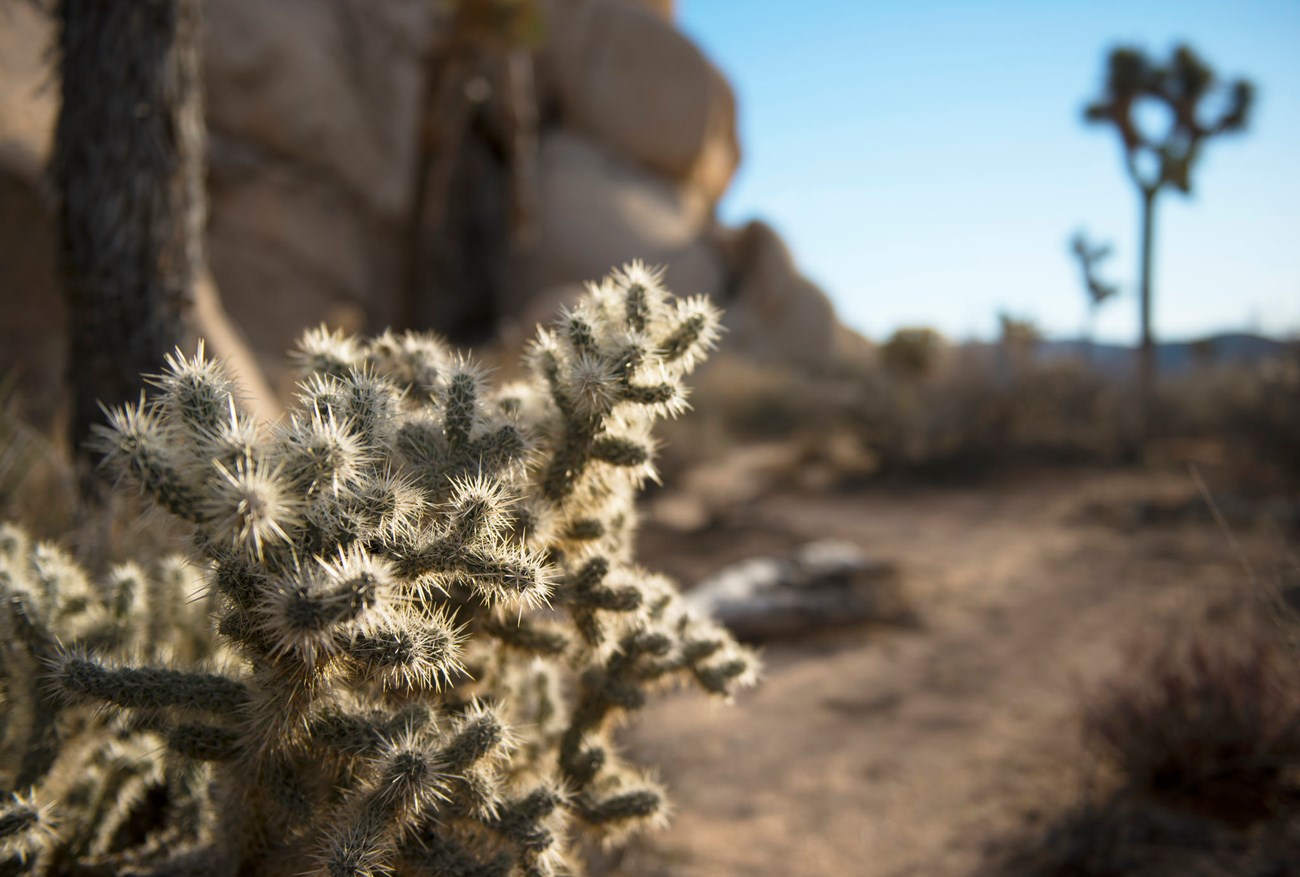
NPS / Hannah Schwalbe 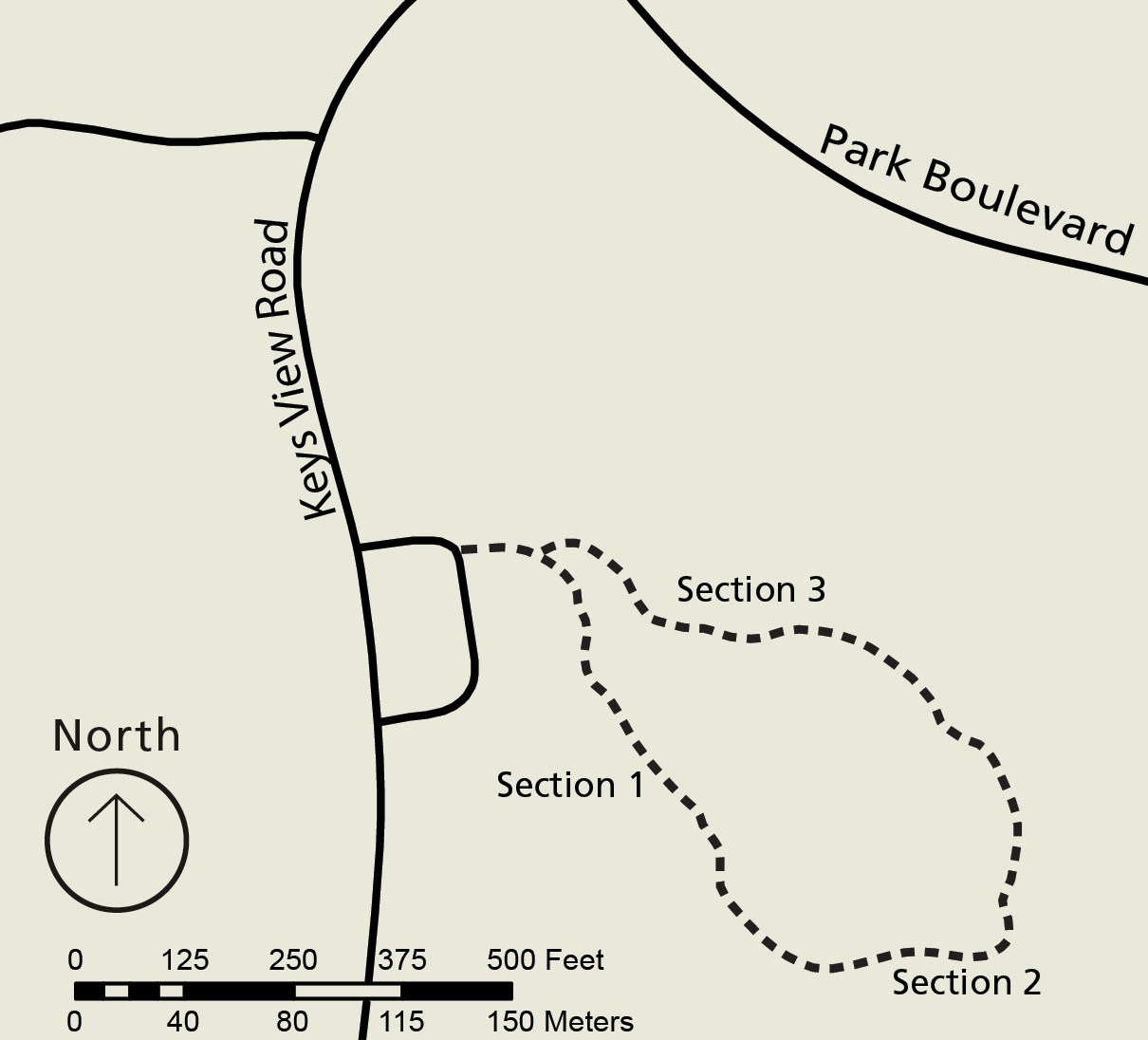
Area Map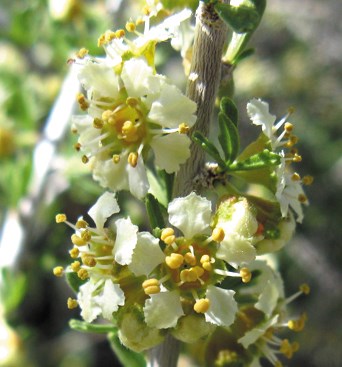
Section 1Desert AlmondPrunus fasciculataFebruary–March These relatives of domestic cherry and almond trees are drought-deciduous—they lose their leaves during dry periods. In spring, though, you will find them covered in leaves, and often with infestations of tent caterpillars (Malacosoma spp.). Tent caterpillars have several intriguing adaptations: for instance, they can generate heat by twitching, and they exude cyanide from their bodies to thwart would-be predators. 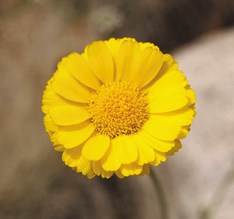
Woolly MarigoldBaileya pleniradiataMarch–June The woolly marigold bloom is, upon closer inspection, composed of many small flowers. This flowering head has several yellow disk florets (small flowers) in the center and a fringe of sunny yellow ray florets arranged around the edge, each with one petal. You might notice that the leaves and stem on this plant have a dense covering of tomentose (intertwined) hair, giving the plant a woolly appearance. 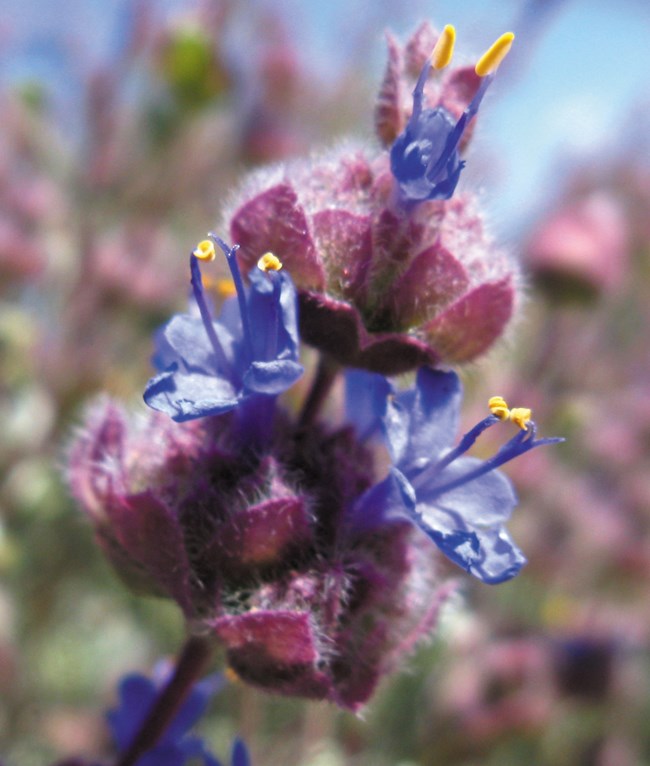
Desert SageSalvia dorriiMay–June A charismatic plant in leaf and in flower, Salvia dorrii is the eponymous plant of the classic western novel Riders of the Purple Sage and the films of the same name. If you see this woody shrub in flower, you will see why it is sometimes called purple sage—the flowers and bracts are a gorgeous dark purple. This aromatic shrub belongs to the mint family (Lamiaceae); its leaves can be used in cooking and were used to treat colds among many Native American tribes. 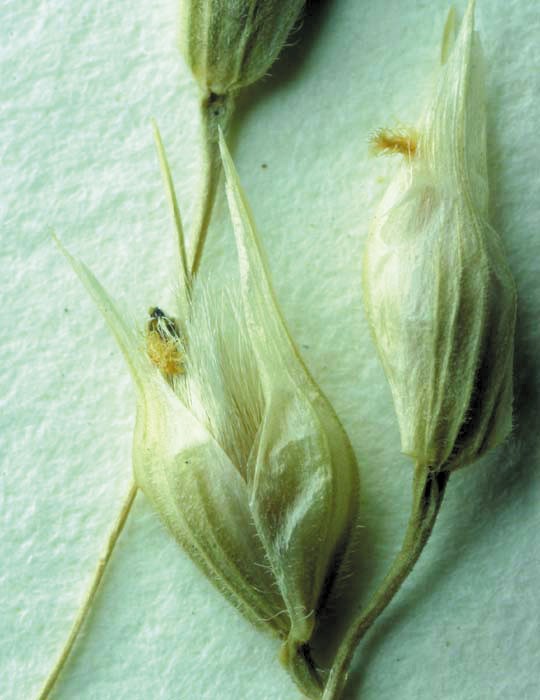
Steve Matson Section 2Indian RicegrassStipa hymenoidesApril–July As the name suggests, the Chemehuevi used Indian ricegrass as a food crop. They ate the seeds raw or ground them into flour to make cakes. The inflorescence of this grass is many-branched, lending it an airy appearance. The seeds of Indian ricegrass are also a staple for many desert rodents, birds, and rabbits. 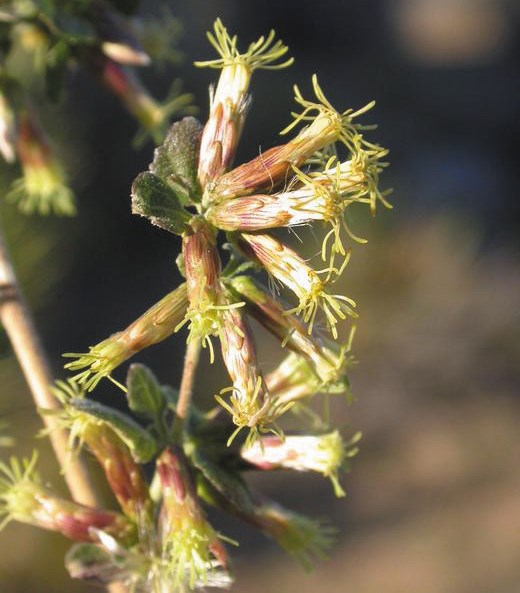
James Andre California BrickelliaBrickellia californicaAugust–November California brickellia is a perennial plant that blooms from late summer to early fall. The narrow flowering heads are inconspicuous, though quite pretty if you stop to look at them! There are more than three dozen species of Brickellia in the Southwest; the California brickellia is one of the most widespread. You will find this leafy shrub growing among boulders or rocky crevices, especially along wash corridors. 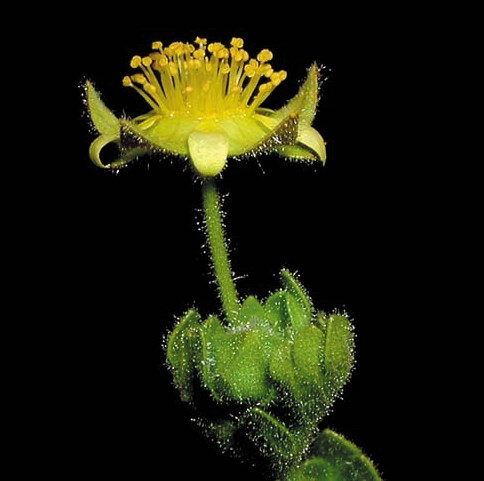
Rock CinquefoilIvesia saxosaApril–August The Latin translation of saxosa is “growing among rocks,” which aptly describes this plant. The rock cinquefoil is a boulder obligate—you’ll find it exclusively in volcanic or granitic crevices, such as the striking monzogranite formations that this trail is named for. Granite acts like a sponge and retains water quite well; plants with roots that can penetrate rock crevices are able to access the available moisture within. 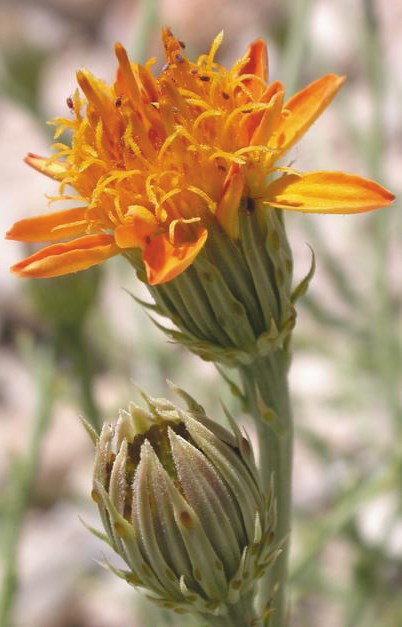
James Andre Cooper's DyssodiaAdenophyllum cooperiApril–June Lean in close and experience the scent of Cooper’s dyssodia—it isn’t just visually striking! The arresting aroma of this plant is generated by oil glands near the tip of the leaves. Oil glands can also be found at the base of the phyllaries (green structures below the flowers). Plants produce oils for many purposes, such as defense against herbivory. 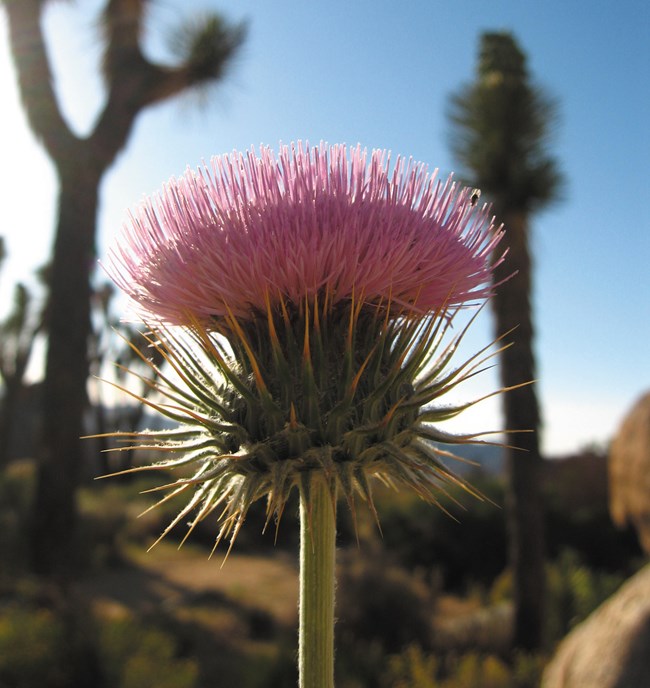
New Mexico ThistleCirsium neomexicanumApril–May Though this plant only produces flowers once, it generally lives for two years. Biennials, like the New Mexico thistle, grow a large rosette (ground-level leaves) in their first year and then send up a stem and flowers in their second. The stout stem of this native thistle can grow to five feet tall and the flowering heads can be two inches wide; flower color varies from white to purple. Beware its spiny foliage! 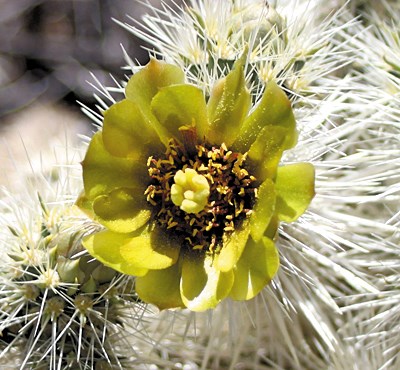
Silver ChollaCylindropuntia echinocarpaApril–May The silver cholla is a stem succulent: it photosynthesizes through its stem, rather than through leaves. The leaves of cacti have been modified into spines, an adaptation that greatly reduces water loss through evaporation. This is one of the many characteristics of cacti that allow them to thrive in the desert. 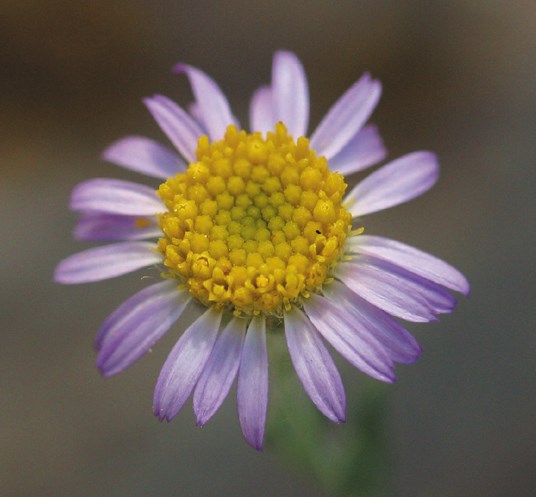
Steve Matson Coville's FleabaneErigeron breweriJune–September Erigeron means “early old man” in Greek, a reference to the grayish appearance of this plant caused by the coarse, stiff hairs on its stems and leaves. Your best bet at spotting this herbaceous perennial is to find it when the daisy-like flowering heads are present. These heads consist of many yellow disc florets (small flowers) surrounded by ray florets, each with one light purple petal. 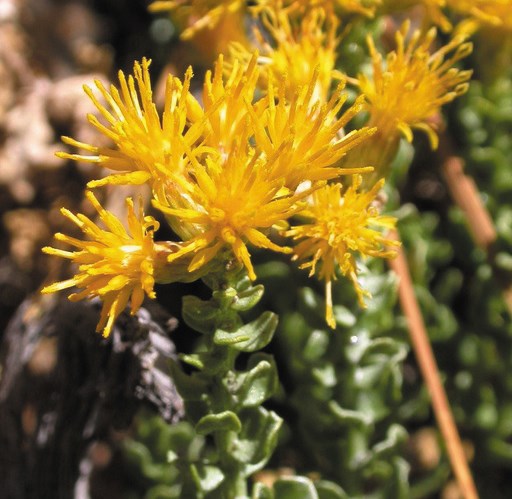
Rock GoldenbushEricameria cuneataSeptember–December Give it a sniff! Like many plants that are used medicinally, rock goldenbush is aromatic due to the compounds that give it healing properties. Indigenous peoples made an infusion of its roots to cure colds and respiratory illnesses, and inhaled steam from the leaves to cure sore throats. They also made a poultice from its leaves to relieve pain and swelling. 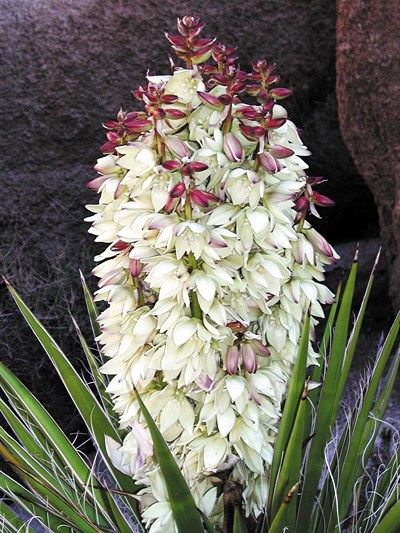
Mojave YuccaYucca schidigeraFebruary–March Mojave yucca is found mostly within the Mojave Desert at elevations ranging from 3000 to 5000 feet (900-1500 meters). You can distinguish it from the related Joshua tree by its long leaves and short, shrubby stature. All yuccas are pollinated by yucca moths (Tegeticula spp.) that specialize in active pollination, a rare form of pollination mutualism. The female moth lays her eggs inside the flower’s ovary, then pollinates the flower. This ensures that when the larvae emerge, they will have a fresh food source—the developing seeds!
| |||||||||||||||||||||||||||||||||||||||||||||||||||||||||||||||||||||||||||||||||||||||||||||||||||||||||||||||||||||||||||||||||||||||||||||||||||||||||||||||||||||||||||||||||||||||||||||||||||
Last updated: July 11, 2017
